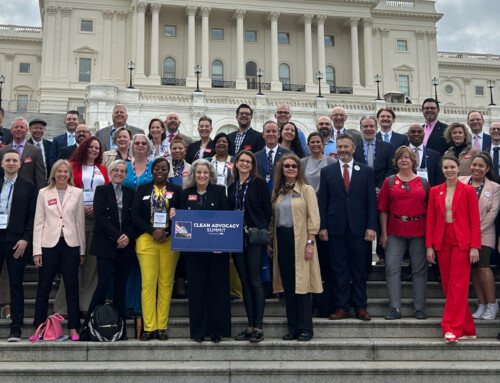Coronavirus Cleaning: Let’s Get the Dialogue Right
As the coronavirus has been identified as an enveloped virus, similar to influenza, we have proven cleaning methodologies and protocols which we can bring to bear as we try to combat its spread. However, the amount of misinformation or misuse of industry terminology by official bodies and by many cleaning customers is leading to greater confusion, higher risk of spread, and a higher potential for customer dissatisfaction. Here’s what you need to explain to end customers to ensure less risk and happier clientele.
Start by defining cleaning, sanitizing, and disinfecting, and which is most appropriate.
What is cleaning? Cleaning is the removal of visible and invisible soiling. Cleaning prepares a surface or item for disinfection. Disinfection is a process that eliminates many or all pathogenic microorganisms, except bacterial spores, on inanimate objects. In contrast to disinfection which is done to kill and destroy bacteria and viruses, sanitizing is gentler, it just lowers the level of biological agents on an object to a safe level. At this time, we do not know what a safe level of sanitizing for COVID-19 is. Therefore, disinfection will inactivate/destroy the virus if the appropriate procedures and chemical are used.
When a customer thinks they need a “deep clean”
What’s in a name? Deep cleaning means different things to different people. The dental industry uses it for your teeth, the household cleaning businesses use it for getting in all the nooks and crevices of your house, and others are now using it for COVID-19 cleaning. That is confusing, and since there is no common definition, we need to focus on the ultimate outcome of any process to create clarity.
For COVID-19, we need to disinfect surfaces and objects that are potentially contaminated with the virus AND are frequently touched and/or used. Customers need to understand and be able to articulate what they want to see at the end of any process.
For COVID-19, surfaces that are soiled, we need a two-stage process. First, surfaces are cleaned to remove soil. Secondly, they are disinfected with appropriate chemicals and processes. Some chemicals allow for the combination of these two processes, since they clean AND disinfect at the same time. Select what is most suitable and approved. Very carefully read the chemical product label and follow the application protocol. Most chemicals for disinfection require the surface to stay wet for a certain dwell time to be able to destroy the virus. Also, any chemical you use might require specific personal protective equipment (PPE) for the cleaning worker to be protected. This information is available on the safety data sheet (SDS) available for all approved disinfectants. Review this information carefully!
Requests are coming in like wildfire with a host of different phrases that customers likely don’t fully understand what they’re really asking for – terms like deep clean, hazard clean, emergency clean, sanitization clean, pandemic clean.
Most locations, especially those that are not health care or occupied by high-risk citizens, are really looking for an increased frequency of cleaning and possible addition of disinfecting. It is best to ask what their goal is first: reduced risk of cross-contamination of high-touch surfaces, increased peace of mind for occupants, or concern that someone in the building has tested positive and one or more areas need to be addressed.
Once you know what they are trying to achieve, you can then turn to evaluating the current scope of work, traffic patterns (are more people working from home, is there a lot of visitor traffic, routine occupancy, etc.), to determine the best workloading of services to meet their needs.
Next you want to explain the why as well as the what, when and how often. This ensures the customer understands what they are getting and how it does achieve their goals, even if it isn’t what they initially asked for.
Cleaning and disinfecting for COVID-19
These steps and recommendation are for community, non-healthcare facilities (e.g., schools, institutions of higher education, offices, daycare centers, businesses, community centers) that might have encountered a person with COVID-19.
Before engaging in the process of cleaning and disinfecting an area for COVID-19 get important information on the location and work requested. Do a site assessment (in person if possible) that allows you to determine the most appropriate process, steps, PPE, and tools. Identify any additional hazards, such as, electrical equipment, sharp corners/objects, and your approach to mitigate these hazards. If cleaning and disinfecting is not required immediately, delay the process for 72 hours, with the area cordoned off to avoid entry. After that, the number of viruses still active will have been reduced significantly.
Prepare an action plan that includes for example:
- The entry and exit location where you stage the donning and doffing of your PPE (putting it on and taking it off), the equipment, and chemicals you’re using. It is important that you prepare your entry and exit location with for example, bags for disposable PPE, disposable towels, cleaning and disinfecting tools, and anything else you need to safely finish off the work. Secure the ability to wash your hands with soap and water immediately after removing your PPE. If a sink is not available, have appropriate hand sanitizers available.,
- Your cleaning and disinfection process, chemicals, application methods and tools, PPE and any other requirements. The minimum PPE to be worn for cleaning surfaces with potential COVID-19 contamination is disposable gloves and an apron. Any additional PPE like a respirator, eye and/or face protection needs to be based on the chemicals and disinfection processes being applied (for example spraying).
Follow your cleaning and disinfecting procedures for the area. Use a two-stage process of cleaning first before disinfecting or a combined process with the appropriate chemical and dispose of all waste according to your local regulations.
Finalize your work with the appropriate checks for successful completion of the work, documentation and customer engagement.
First published in Cleaning Matters.

















